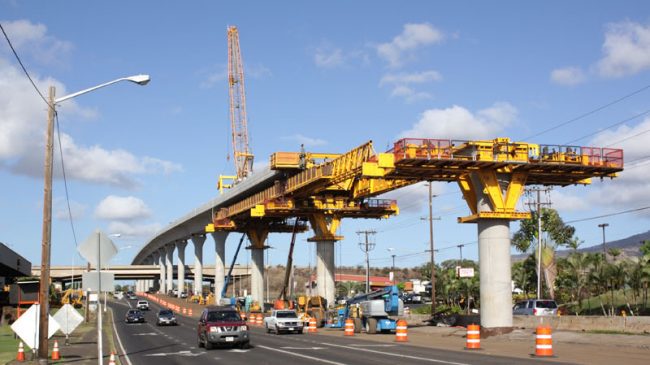States are struggling to adequately invest in infrastructure, a challenge compounded by the declining purchasing power of revenue from the federal gas tax and lower revenue from more fuel efficient automobiles. Meanwhile, continued deadlock at the federal level fails to inspire confidence that help is coming.
Forward thinking policymakers recognize that in order to rebuild crumbling infrastructure, new approaches must be taken. Colorado is one of several states leading the way.
The Colorado Department of Transportation has a unique division operating under its roof, guided by a separate governing body, called the High Performance Transportation Enterprise (HPTE). HPTE was created several years ago when it became clear that solutions generated at the state level would be vital to Colorado’s economic competitiveness and Coloradans’ quality of life. HPTE is garnering well-deserved attention, both within the state and nationally, for its innovative work.
In this January 2013 Innovators in Action interview, Reason Foundation policy analyst Harris Kenny spoke with HPTE director Michael Cheroutes (pictured above) and enterprise specialist Nick Farber (pictured below) about how HPTE is leveraging innovative policy tools to improve surface transportation infrastructure in Colorado.
Harris Kenny, Reason Foundation: What is the High Performance Transportation Enterprise (HPTE)?
Michael Cheroutes and Nick Farber, High Performance Transportation Enterprise (HPTE): HPTE is a division of the Colorado Department of Transportation (CDOT), but we are governed by a seven member board. Three are transportation commissioners, four are members appointed from different councils and governments across the state of Colorado. HPTE was formed in 2009 through the FASTER (Funding Advancements for Surface Transportation and Economic Recovery) legislation.
Kenny: How is HPTE unique from the rest of the Colorado Department of Transportation?
Cheroutes and Farber: HPTE is unique because it is the innovative transportation finance arm of CDOT. HPTE’s vision is to pursue public-private partnerships (and other innovative and efficient means of financing multimodal projects), make sure innovative projects are properly prioritized and accelerate delivery of those projects to facilitate the state’s economic recovery – we’re much more than just a tolling agency.
Kenny: What is one of HPTE’s most successful projects underway today?
Cheroutes and Farber: One would be Phase 2 of the US 36 Project, which is currently underway. The US 36 Project is an eighteen-mile (from downtown Denver to Boulder), 50-year DBFOM project. Construction for the project is an estimated $100 million, in addition to operation and maintenance. US 36 is funded in part by tolls paid to the concessionaire. CDOT, the Regional Transportation District (RTD), the Denver Regional Council of Governments (DRCOG) and some local governments are also contributing funds to help finance the project. In other words, private equity is playing a role, but it’s not all private equity.
Kenny: What are some upcoming projects that HPTE is excited about?
Cheroutes and Farber: We issued an RFP for the I-70 East project, which, among other things, will replace a viaduct going into Denver on the east side of the city that was built in 1964. The RFP is specifically seeking a financial advisor to help evaluate options on how to finance the preferred for the I-70 East project.
Kenny: What is the status of the I-70 West corridor?
Cheroutes and Farber: In July 2011 HPTE received an unsolicited proposal for a public-private partnership for the I-70 West corridor, which runs from Denver through the western part of the state. Because of the high cost and the time it would take to evaluate whether or not this proposal is feasible, it was decided that CDOT take over the project.
Kenny: What issues has HPTE solved for CDOT since its inception in 2009?
Cheroutes and Farber: For starters, we’ve helped alleviated some of the TABOR issues that the department has had. (In 1992 Colorado voters approved the Taxpayer’s Bill of Rights, or TABOR, into the state constitution requiring voters to approve tax increases.) For instance, CDOT does not have the power to toll, and it can’t borrow money without having an election. We are able to bond and apply for TIFIA (Transportation Infrastructure Finance and Innovation Act) loans, whereas CDOT cannot. On Phase I and Phase II of the US 36 corridor project there is a current $54 million TIFIA loan, which we are the borrower on. We submitted a Letter of Interest (LOI) for a second loan for the project, and were invited to apply.
Kenny: Has HPTE learned anything from other states, like Virginia, since opening in 2009?
Cheroutes and Farber: We’ve learned a lot from other states, and definitely from Virginia. Mike Cheroutes and some senior management members went out to Virginia and met with their public-private partnership office in September and had a really good discussion about how their office is structured and things they’ve done since their inception. We benefited from their office structure, lessons learned, etc. and we’re looking to implement some of their ideas that we think would work in Colorado.
Michael Cheroutes is the director and Nick Farber is an enterprise specialist of the Colorado Department of Transportation’s High Performance Transportation Enterprise (HPTE). Learn more about HPTE online at: http://www.coloradodot.info/programs/high-performance-transportation-enterprise-hpte.
For other articles in Reason Foundation’s Innovators in Action series, see the 2012 archive online here.


